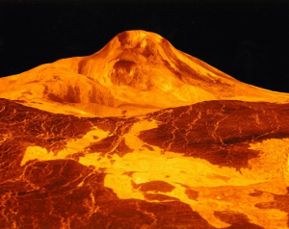
Mike Ramsey has been granted funding from NASA’s Solar System Workings Program for his proposal for Modeling the Open-Channel Lava Flows of Venus: Constraining Emplacement Conditions, Cooling Rates, and their Implications for Future Orbital Data.
The proposed study is directly relevant to NASA’s Solar Systems Working program as it will identify physical and chemical variations with volcanic activity on Venus. Venus, the terrestrial planet most akin to Earth in size, composition, and interior structure, boasts a surface rich in volcanic rocks and lava flows resembling those found in Hawaii and Iceland. Notably, individual flows on Venus often surpass the typical lengths seen on Earth, though some are comparable in scale. Understanding Venusian igneous processes is pivotal for unraveling its recent volcanic activity. In fact, the recently selected NASA VERITAS and ESA EnVision missions have a primary goal of detecting new or ongoing volcanic activity on Venus. Should they succeed, our research will offer essential insights into the timeframes and temperatures involved in these eruptions. Open-channel lava flows, characteristic of initial eruption stages, hold valuable clues about the eruption's specific conditions.
Additionally, this research characterizes the chemical, mineralogical, and physical features of the Venusian surface associated with channelized lava flows. Research results will serve as a comparative evaluation of extrusive volcanism between Earth and Venus to understand processes that drove the observed dichotomy between the two planets and should directly benefit future NASA and ESA data returned from Venus.
The main goal of Ramsey’s proposed research is to estimate eruption rates, flow durations, and in particular, cooling rates for over 150 channelized flows on Venus. He will use an emplacement model that is well-established and designed specifically for the existing flows on Venus. The proposed work will produce the most accurate estimate of channelized flow formation on Venus. Results will provide the range of emplacement times and cooling rates critical for future data analysis.